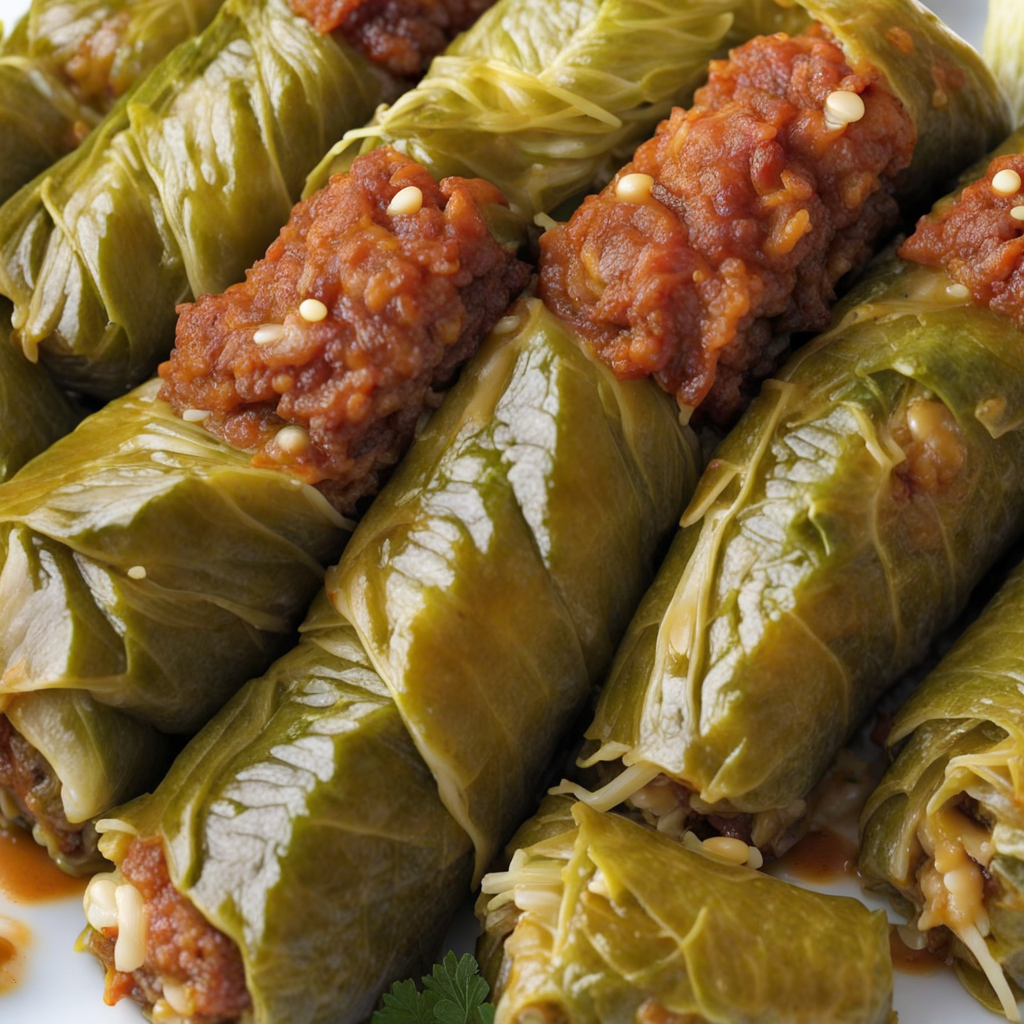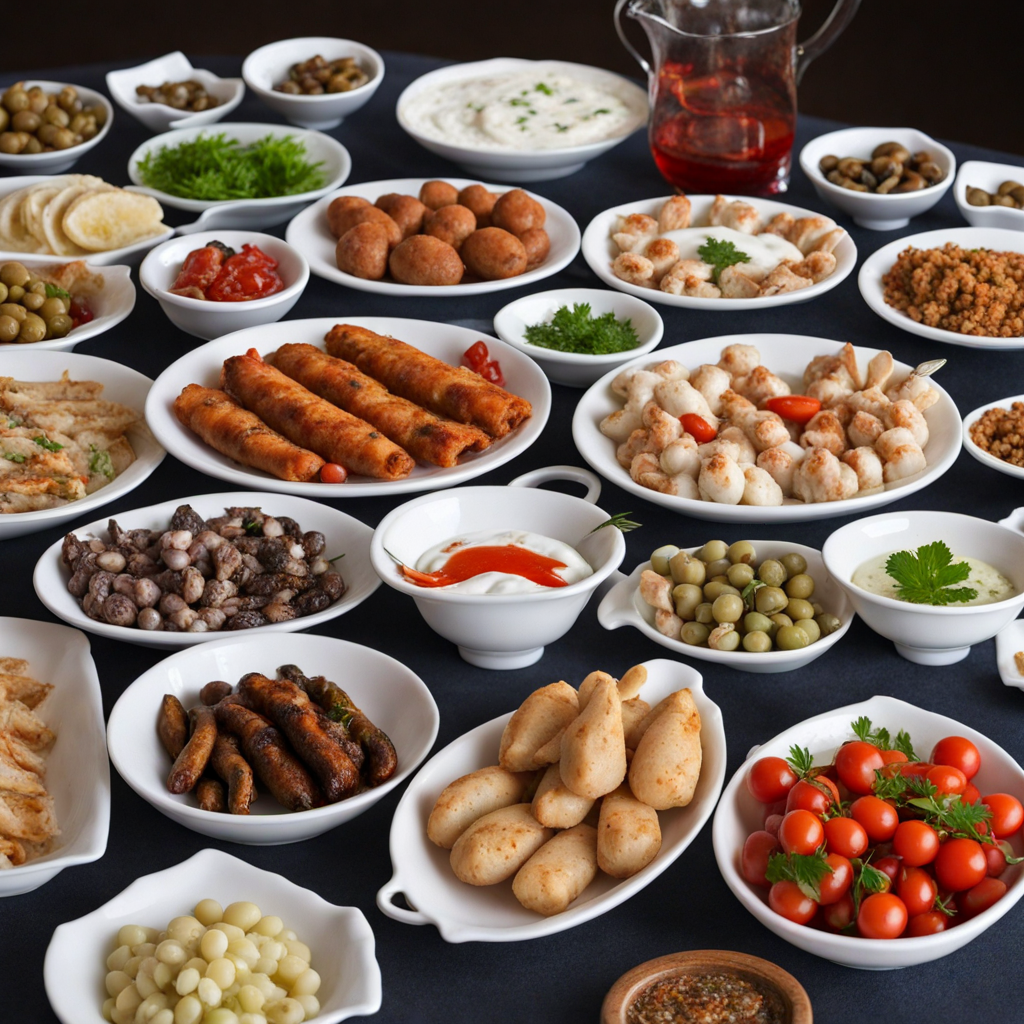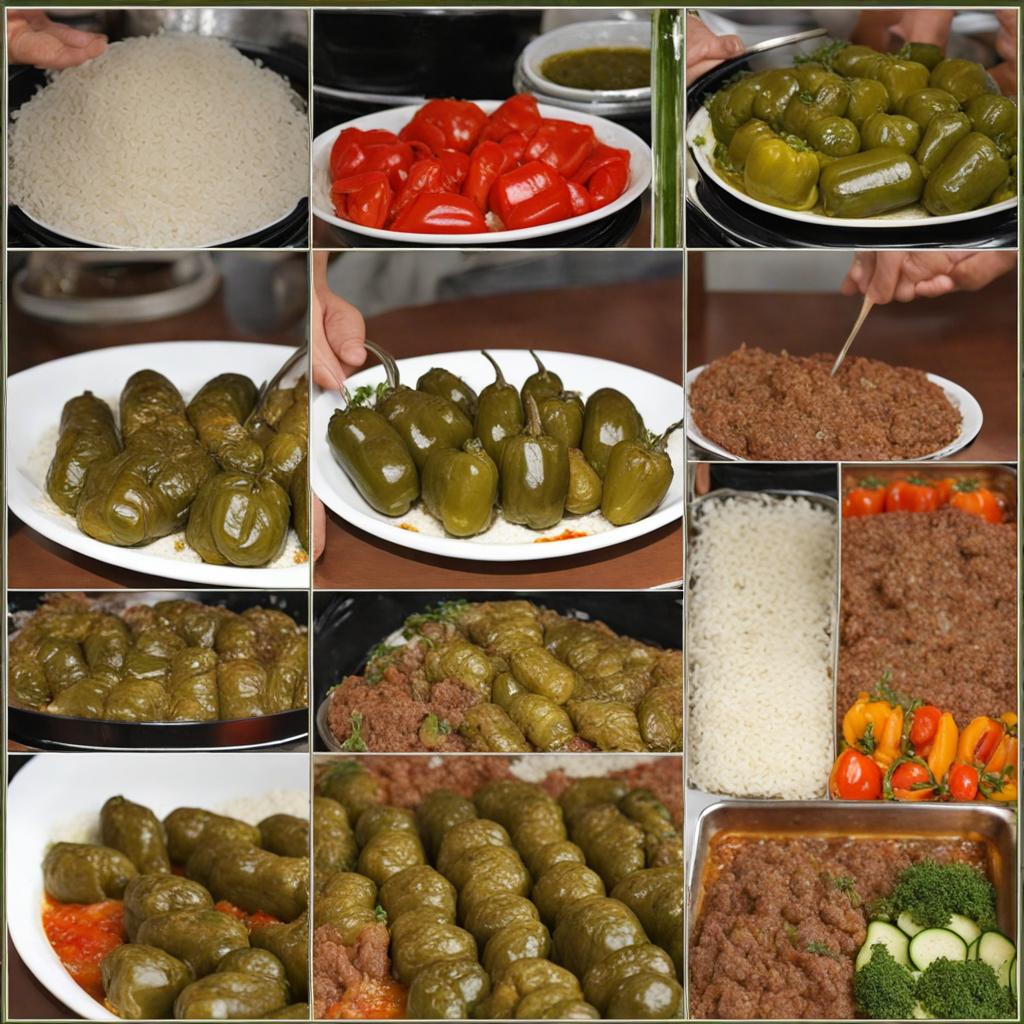Sarma
Sarma is a traditional Turkish dish that showcases the rich flavors and culinary heritage of the region. At its core, sarma consists of grape leaves stuffed with a savory mixture of rice, minced meat (often lamb or beef), and a medley of aromatic spices. The rice is typically flavored with onions, dill, and sometimes even pine nuts or currants, creating a delightful contrast of textures and tastes. The grape leaves, tender yet slightly tangy, serve as a perfect vessel for the filling, wrapping the ingredients in a beautifully compact form that enhances the overall experience of each bite. As the rolls simmer gently, they absorb the flavors of the spices and the tangy essence of the grape leaves, resulting in a dish that is both hearty and refreshing. Often, sarma is accompanied by a drizzle of lemon juice or a side of yogurt, which adds a creamy and cooling contrast to the warm, spiced rolls. The combination of the tangy grape leaves and the savory filling makes sarma a unique culinary experience that tantalizes the taste buds and leaves a lasting impression. In Turkey, sarma is not just a meal; it is often a symbol of hospitality, enjoyed during family gatherings and special occasions. Each family may have its own variation, reflecting regional ingredients and personal preferences, which adds to the dish's charm and diversity. Whether served as an appetizer or a main course, sarma invites food lovers to explore the depth of Turkish cuisine and discover the warmth and richness of its flavors.
How It Became This Dish
The Rich Tapestry of Sarma: A Culinary Journey Through Time Sarma, a beloved dish originating from Turkey, has woven its way into the culinary traditions of many cultures across the Balkans, the Middle East, and beyond. This dish, which typically consists of grape leaves stuffed with a savory mixture of rice, minced meat, and an array of spices, is not just a meal; it is a symbol of cultural identity, communal gatherings, and a testament to the historical exchanges that shaped various nations. #### Origins of Sarma The roots of sarma can be traced back to the Ottoman Empire, which spanned across Europe, Asia, and Africa from the late 13th century until the early 20th century. The word "sarma" itself comes from the Turkish verb "sarmak," meaning "to wrap." This reflects the dish's essence: wrapping ingredients in leaves, a practice that is as old as time. The use of grape leaves in particular highlights the significance of viticulture in the region, which has been a staple of Mediterranean agriculture for millennia. While grape leaves are the most common wrapping for sarma, variations exist using cabbage leaves, and in some regions, even zucchini or eggplant. The concept of wrapping food to enhance flavor and preserve moisture is not unique to Turkey; it can be found in cuisines around the world. However, the Turkish version of sarma stands out due to its specific blend of spices and ingredients, which reflect the culinary influences of the empire’s vast territories. #### Cultural Significance Sarma is more than just a dish; it is deeply embedded in Turkish culture and tradition. The preparation and consumption of sarma often coincide with significant family gatherings and celebrations, such as weddings, holidays, and religious festivals. The act of making sarma is frequently a communal effort, bringing together family members, particularly women, who gather to prepare and roll the leaves. This shared activity fosters a sense of community and connection, making sarma a dish associated with love, hospitality, and heritage. In Turkey, sarma is traditionally served during Ramadan, the Islamic holy month of fasting, as it is a satisfying meal that can be enjoyed during iftar, the evening meal to break the fast. Its presence on the table signifies abundance and togetherness, values that hold great importance in Turkish culture. The dish is also a staple at special occasions, symbolizing the warmth and generosity of the host. #### Development Over Time As the Ottoman Empire expanded, so did the culinary practices associated with sarma. The dish evolved, absorbing influences from the diverse cultures within the empire. For instance, in the Balkans, particularly in countries like Greece, Serbia, and Bulgaria, sarma took on a unique identity, incorporating local ingredients and spices. In Greece, for example, it is often made with dill and served with lemon sauce, while in the Balkans, it might be prepared with smoked meat or served alongside sour cream. The 19th century marked a significant turning point in the history of sarma. With the decline of the Ottoman Empire and the rise of nationalism, countries in the Balkans began to assert their culinary identities. Sarma became a point of pride for these nations, with each region developing its distinctive style. In Turkey, the dish remained a staple, often enjoyed at family gatherings and served in homes, while in the Balkans, it was celebrated as a national dish, particularly in Serbia and Bosnia, where it is often made with sauerkraut leaves. The industrialization and modernization of the 20th century brought changes to food preparation methods, and sarma was no exception. While it remained a beloved dish, the way it was prepared began to shift. Busy lifestyles led to the emergence of pre-packaged, frozen sarma, making it more accessible to those with limited time for cooking. Despite these changes, traditional recipes and methods are still cherished, with many families passing down their unique techniques through generations. #### Modern-Day Sarma Today, sarma continues to be a cherished dish in Turkey and its neighboring regions. In urban areas, it can be found in restaurants and cafes, often served alongside yogurt or a tangy tomato sauce. Home cooks still celebrate the traditional methods of making sarma, with family gatherings dedicated to rolling leaves and preparing the filling. The dish remains a symbol of cultural identity, bridging the past with the present. In contemporary Turkish cuisine, chefs are experimenting with sarma, infusing it with modern twists while respecting its traditional roots. Variations include vegetarian options filled with a mix of rice, nuts, and spices, catering to the growing demand for plant-based meals. This adaptability ensures that sarma remains relevant in a rapidly changing culinary landscape. #### Conclusion The story of sarma is a testament to the rich tapestry of cultural exchange, historical significance, and communal bonds that food can foster. From its origins in the Ottoman Empire to its modern adaptations, sarma embodies the spirit of continuity and change, reflecting the values of love, hospitality, and shared heritage. As it continues to be enjoyed in homes and restaurants across Turkey and beyond, sarma remains not just a dish but a cherished symbol of identity, tradition, and the enduring power of food to bring people together.
You may like
Discover local flavors from Turkey







